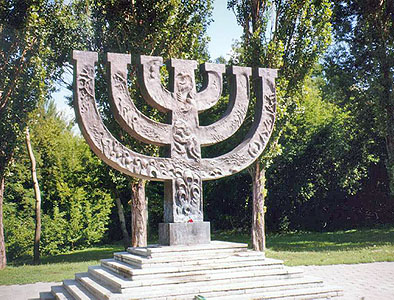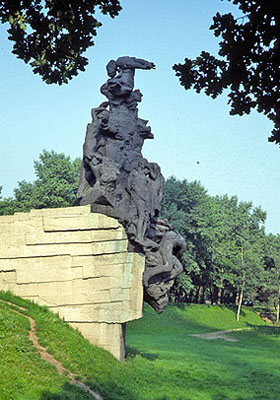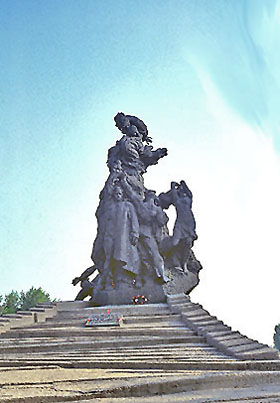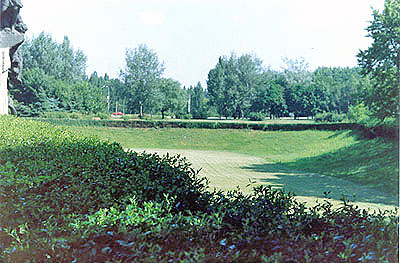
I remember looking at this innocent looking depression in the ground, nicely landscaped outside of--now actually in--Kyiv. I knew, however, that this was no simple park or picnic grounds.

From reading this book, I knew about the massacres of Jews that had taken place at Babyn Yar, a ravine on the outskirts of Kyiv during World War II.


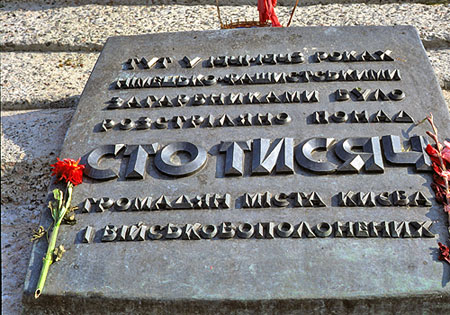
On 24 September 1941, less than a week after the German army had entered Kyiv, a massive bomb exploded around four o'clock in the afternoon at the German headquarters. Then over the next few days, there were more explosions in buildings in the Kreshchatik that had
been occupied by Germans. Many Germans and civilians were killed and injured.
After the war, it was determined that a group of NKVD (Soviet secret police) members were left behind by the Soviets to offer some resistance against the conquering Germans. The Germans decided that the explosions were the work of Jews and that the sabotage provided a good excuse to eliminate the Jewish population of Kyiv, disposing of the bodies in the Babyn Yar ravine. What is now clear (and what has remained a politically-explosive issue) is the fact that the Germans did have some collaboration from residents of the city in the destruction of the Jews.

Please read further details about Babyn Yar.
- Babi Yar: Mass Murder (This is not easy reading.) and the section "Babi Yar: Destroying the Evidence." (Please brace yourself before reading this account of what some of the prisoners had to do to escape from their hellish work).
- en.wikipedia.org/wiki/Babi_Yar
- Babi Yar, the poem, by Evgenii Yevtushenko, translated by Benjamin Okopnik
- Jewish Virtual Library: Babi Yar
- We Remember Babi Yar
- David Budnik and Yakov Kaper, Nothing Is Forgotten: Jewish Fates in Kyiv (1941-1943)
- "The Einsatzgruppen Case," Military Tribunal II, Case No.9
- The History Place: Holocaust Timeline
- Einsatzgruppen, Operational Situation Report USSR No. 101 (Accurate statistics reported back to Berlin by the Germans after the initial wave of killing in Kyiv)
- Kyiv and Babi Yar
- Daniel Macisaac, Future of Babi Yar
pits Jew against Jew
- Image of Soviet POWs at forced labor in 1943 exhuming bodies in the ravine at Babi Yar, where the Nazis had murdered over 33,000 Jews in September of 1941.
- Babi Yar Panorama by Andrew Jakowleff
- Symphony No. 13 ("Babi Yar") by Dmitrii Shostakovich
- Babi Yar and then Babi Yar Statements
For political reasons an official memorial was not built at the Babyn Yar site until 1976. The first memorial did not mention the fact that most victims were Jews. It took a further 15 years before a new memorial (a Menorah) was built which today serves as a place for commemorative ceremonies. (The Menorah was not there when I was there in 1990.)
